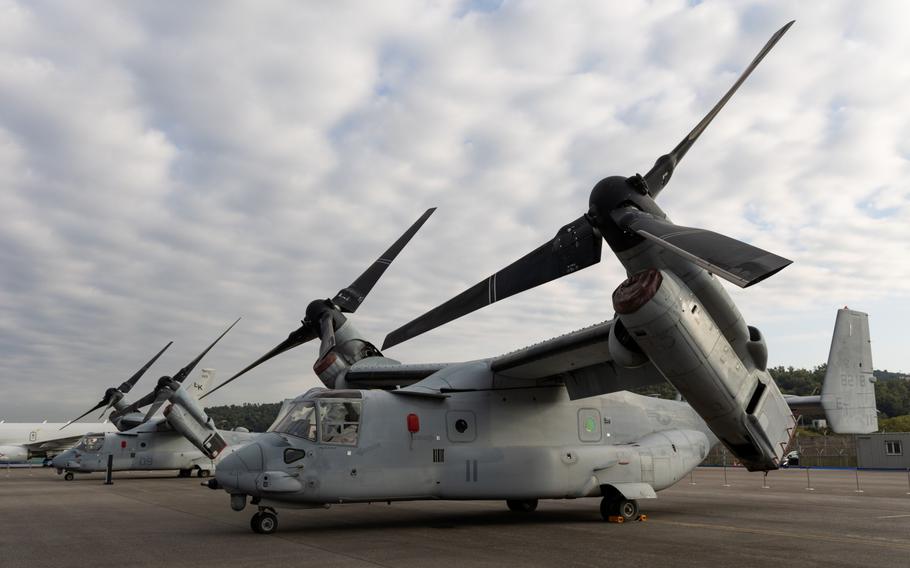
A US Navy V-22 Osprey aircraft on display at the Seoul International Aerospace & Defense Exhibition at Seoul Airport in Seongnam, South Korea, on Oct. 18, 2021. (SeongJoon Cho/Bloomberg)
The U.S. Navy’s new version of the tilt-rotor Osprey aircraft designed for missions at sea isn’t yet “operationally suitable” because it has only “partially met reliability requirements,” according to the Pentagon’s testing office.
Among the problems: Its ice protection system “accounted for 25% of the operational mission failures, which will result in mission aborts,” the Defense Department’s director of operational test and evaluation said in a non-public assessment marked “Controlled Unclassified Information” and obtained by Bloomberg News.
Otherwise, though, the test office found the CMV-22B Osprey is “operationally effective for carrier onboard delivery, medical evacuation, Naval Special Warfare support and search and rescue.”
The CMV-22B is a modified version of the widely used Marine Corps aircraft that lands and takes off like a helicopter and then flies like an airplane. It’s replacing the C-2A Greyhound, a nausea-inducing, claustrophobic aircraft first produced in 1965, to land cargo and people on aircraft carriers.
Spokespersons for Bell Helicopter Textron and Boeing, which jointly produce the Osprey, referred questions to the Naval Air Systems Command.
The new aircraft “will provide the Navy with significant increases in capability and operational flexibility,” according to a fact sheet from the command.
A command spokesperson, Megan Wasel, asked about actions the Navy was taking to address the test assessment, said the aircraft had just completed its first operational deployment this month “and successfully proved” its value “as part of the U.S. Navy’s Air Wing of the Future. In the coming months, we will be reviewing this first deployment in its entirety and will implement key lessons learned, with the goal of improving readiness, reliability, and combat capability.”
The Navy has purchased all of the planned 44 aircraft, Wasel said.
Navy operational tests evaluated the aircraft from January 2021 until mid-July 2021, and it has flown in limited fleet operations. It didn’t meet a requirement for 75% operational availability or a metric to fly longer than 12.5 hours before an “operational mission failure,” according to the test office assessment.
The aircraft’s HF radio “which is required for over-the-horizon communications to support” Navy operations far from shore “was inconsistent, demonstrating a 12% success rate for long-range, two-way communications,” according to the report.